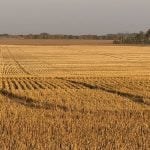This year Canadian accountants will move to the international financial reporting standards (IFRS) for public companies. Meanwhile, private companies can choose one of two options IFRS or Accounting Standards for Private Enterprise (ASPE).
The acronyms seem bureaucratic, but the impact for farmers can be real.
About two million private businesses operate in Canada, and although all now can adopt the international IFRS standards, Peter Martin from the Canadian Accounting Standards Board expects very few will. The companies that do make the move will be larger private companies with international ownership or with other business activities abroad.
Read Also

The wildly adaptable side of next gen agriculture
Some people just fall into the world of agriculture — and consider themselves lucky to have stumbled into such a…
Instead most small business accountants will use the new private business standards, which are very close to the old Canadian standards and which require less disclosure. The transition to these private business standards should be quite easy, says Martin. It will generally be business as usual but with an opportunity for some one-time re-evaluation changes.
Farmers will also feel comfortable with the reports. The format of statements the income statement, balance and cash flow statement will look the same, says David Engdahl, accountant with Hergott Duval Stack in Saskatoon.
(Financial statements have income statements, balance sheets and cash flow. Income statements show how revenues and costs combine to determine profits. Balance sheets are a picture of how assets and liabilities compare. Cash flow statements show the source and uses of funds and the impact of improving operating cash flows.)
The accounting changeover opens a one-time opportunity for farmers to bump the value of capital and intangible assets on their financial statements. That can better reflect the value of the farm in review engagements and audits, and possibly notice to reader. However, notice to reader reports can already use market value since these reports don t have to follow any set accounting standards.
Many lenders look to the balance sheet to see the strength of a business, says Engdahl. Bumping the value of assets to fair value may allow for more financing or better rate.
This is particularly useful if a farmer bought land or quota in the 70s, meaning the value on the balance sheet could be significantly lower than the current market value. By moving to fair value, it will improve the balance sheet by increasing asset value and equity. This may put the farm in a better position when negotiating a loan.
This new standard should more accurately reflect the value of a farm, especially one with assets that have been held a long time, say Engdahl.
Tax will continue to use historical costs. This increase to your assets will not flow through to your income statement, says Engdahl. In very rare instances this bump may affect tax numbers, most notably if assets were in excess of $10 million for a corporation.
This switch is an attempt to simplify and standardize financial reports, and to reduce the number of piecemeal changes that were constantly being made to the current Generally Accepted Accounting Standards (referred to as GAAP). Most countries use the IFRS/ASPE system except the U.S. It shouldn t be a problem unless you re going to the U.S. for credit and they want financial statements in their formats.CG














